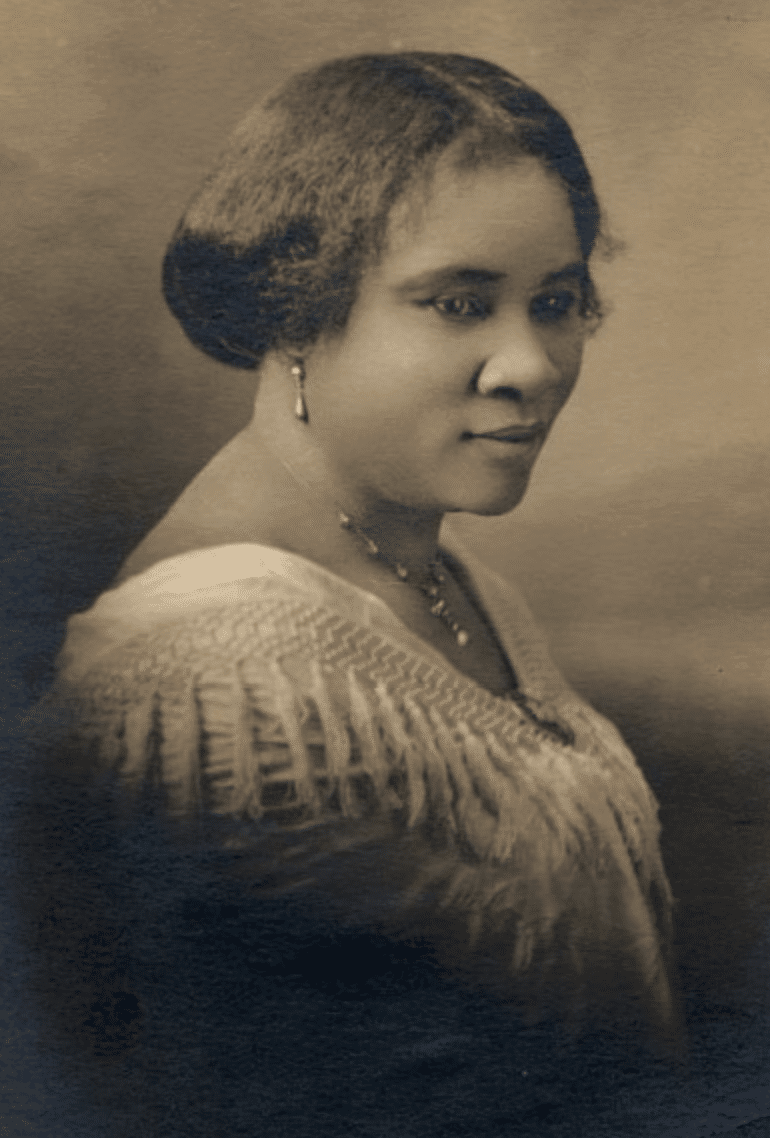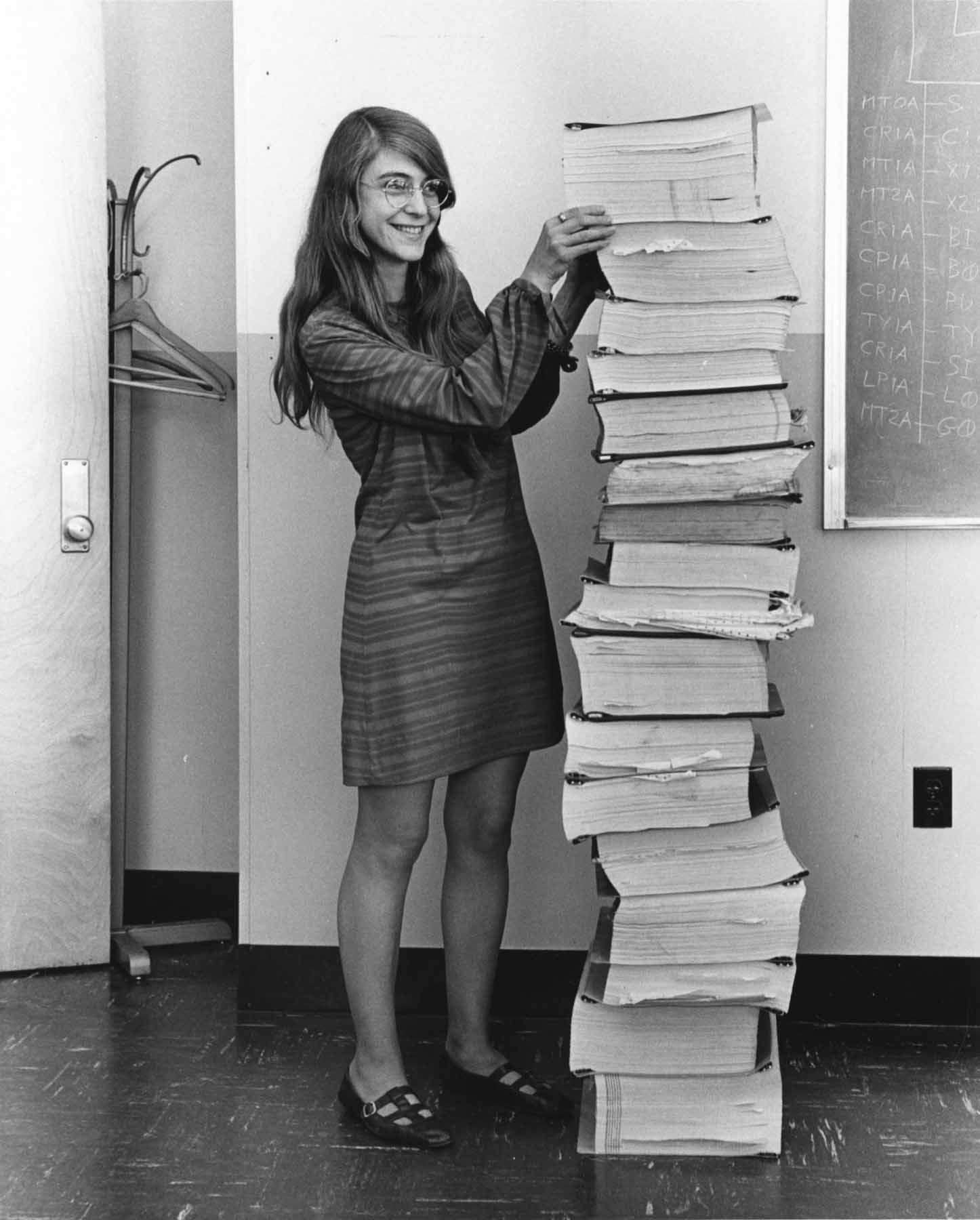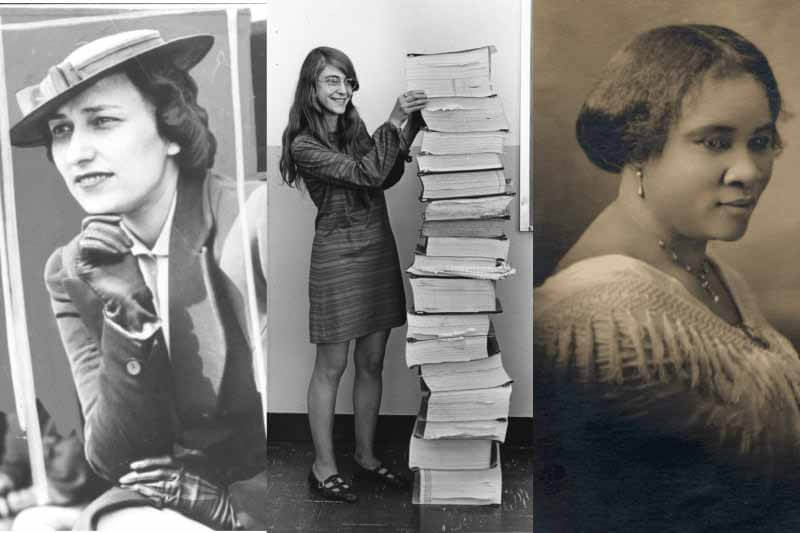March is Women’s History Month, and while the contributions of women should be celebrated all year long, this month is a good time to shed light on pioneers who are sometimes overlooked. Here we salute three women who often don’t get the recognition they deserve for the paths they paved.
3 Stories on Women From the Past 100-ish Years
- Madam C.J. Walker, America’s First Female Self-made Millionaire
- Effa Manley, Co-owner of the Newark Eagles from 1936-1948
- Margaret Hamilton, the Woman Who Put Man on The Moon
Madam C.J. Walker, America’s First Female Self-made Millionaire
Many who recognize the name Madam C.J. Walker know her as the first American woman to become a self-made millionaire. Born Sarah Breedlove in 1867 on the same plantation where her parents and older siblings had been enslaved, Madam C.J. made her fortune by building a hair care company that produced products for Black women. But this only scratches the surface of her contributions. “What’s really important to me is how she used her money and her influence as a philanthropist and a political activist,” says A’Lelia Bundles, Madam C.J.’s biographer and great-great-granddaughter. Madam C.J. was one of the largest donors to the National Association for the Advancement of Colored People (NAACP), gave to the Tuskegee Institute and what’s now known as Bethune-Cookman University, and also funded efforts to preserve the home of Frederick Douglass.
“When you delve more into her biography and her narrative, she becomes much more important than just being a first millionaire,” says Rebecca Price of Chick History, a nonprofit organization dedicated to preserving and promoting women’s history. “She becomes a patron of racial uplift. She is a funder of the movement.”

Madam C.J.’s early life was marked by misfortune. She was orphaned at age 7, married at 14 (to Moses McWilliams, with whom she had a daughter, A’Lelia, in 1885) and became a widow at 20. After losing much of her hair, Madam C.J. was inspired to create hair care products for Black women. She started selling her hair grower at the turn of the 20th century and eventually completely changed the Black hair care industry and built an empire along the way.
At the time of her death, Madam C.J.’s estate was worth $600,000 (about $9.5 million in 2021 dollars). That, plus the value of her real estate, jewelry and other assets, put her over $1,000,000 in 1919 dollars. “It’s a Cinderella story,” Rebecca says. But not one with a damsel in distress waiting for a prince to save her. Madam C.J. saved herself and empowers other Black women, too, by giving them a path to financial independence.
To grow her business, Madam C.J. hired and trained saleswomen she called “beauty culturists” to sell her products. At the time, most of the jobs available to Black women were as sharecroppers, maids, laundresses or cooks. “Black women did the hardest work, the most unpleasant work, the most dangerous work,” A’Lelia says. “She was providing another opportunity for them.”


In 1917, Madam C.J. held a convention in Philadelphia for her sales agents, an event noted as one of the first national gatherings of businesswomen. That same year, she was a member of the organizing committee for the NAACP’s Silent Protest Parade against lynching. She also joined a group of Harlem leaders on a trip to Washington to petition for legislation that would make lynching a federal crime. “I see her as Black Lives Matter 1.0,” A’Lelia says.
While some may argue that Madam C.J.’s products encouraged assimilation to white beauty standards, Rebecca stresses, “The industry of beauty for the Black community is not just about aesthetics.” Not only does the Black beauty industry offer economic opportunity, but both Rebecca and A’Lelia credit Madam C.J. with helping birth the culture of “beauty shop politics.” Beauty salons, like barbershops and churches, helped fund civil rights movements and became important gathering places. “It gives women access to politics and those conversations,” Rebecca says.
In 2020, Netflix released the limited series “Self Made,” inspired by Madam C.J.’s life and A’Lelia’s 2001 book. With Academy Award winner Octavia Spencer starring as Madam C.J., “Self Made” introduced Madam C.J.’s story to millions around the world.
RELATED: Rediscovering History: The 100th Anniversary of the 19th Amendment’s Ratification
Effa Manley, Co-owner of the Newark Eagles from 1936-1948
Effa Manley was a woman determined to win. From 1936 to 1948, Effa and her husband Abe owned the Negro League baseball team the Newark Eagles. Though the only woman among an industry of male owners, Effa thrived, and in 1946, the Newark Eagles won the Negro League World Series. But Effa wanted her players — and her people — to be winners off the baseball field, too.
“She was absolutely aware not just of what her baseball team was doing on the field — and that was really important to her because she was really competitive and wanted to win ball games — but also how this baseball team could have a larger impact in the Black community,” says Andrea Williams, author of the newly released Baseball’s Leading Lady: Effa Manley and the Rise and Fall of the Negro Leagues. In her book, Andrea states, “Effa Manley saw the Negro Leagues as a vehicle to transport the Black community to a position of equality in American society, to provide jobs and financial stability where they were sorely lacking, and to give Black boys and girls regular opportunities to witness victory when so much of their lives was mired in defeat.”


Just as segregation and Jim Crow laws forced Black communities to build their own business districts and social scenes, discrimination also led to the creation of the Negro Leagues. “That is an ugly period of American history, but it birthed this beautiful thing,” Andrea says, “a space for Black teams and Black leagues that don’t just provide an opportunity for Black baseball players but also Black managers and executives.”
Effa handled contracts for the Eagles and was quickly recognized for her talent in promoting her team. She cared deeply for her team’s players, managing their travel schedule and working to get them the best available accommodations while on the road. She also fought for the Negro Leagues to get the recognition and compensation she felt they deserved when Black players were signed to Major League Baseball.
“Even before she gets to the baseball, she’s acutely aware of the issues plaguing the Black community and willing to try to do something about it,” Andrea says. For example, Effa led a boycott of a Harlem department store that accepted Black customers but refused to hire Black workers. Her commitment to progress doesn’t waver when she becomes a baseball executive. “Now she has this massive platform through her ownership of the Newark Eagles,” Andrea says. And she used that platform to host anti-lynching campaigns, raise money for the local chapter of the NAACP and more.
Effa, who passed away on April 16, 1981, became the first woman elected to the Baseball Hall of Fame in 2006.
RELATED: What Does This “F” Word Mean To You?
Margaret Hamilton, the Woman Who Put Man on The Moon
On July 20, 1969, people across the country and around the world watched with bated breath as Neil Armstrong and Buzz Aldrin became the first men to land on the moon. But what many didn’t know at the time was that a woman helped get them there. Margaret Hamilton, who was just 32 years old at the time, led the team that developed the software that helped guide the historic landing.
When Margaret joined NASA in 1964, she was the first woman and first programmer hired for the Apollo program, which was launched to put man on the moon and return him safely to Earth. At the time, computer technology was in its infancy and viewed with skepticism. “Mainframe computers took up the size of a house and yet were capable of less computing power than the oldest mobile phone you can remember,” says Marian Crenshaw Austin, an independent researcher who studied history at the University of Alabama at Birmingham and earned her doctorate at the University of East Anglia in England. “The idea that someone could be a software engineer was a joke.” But Margaret, who coined the term “software engineering,” would have the last laugh. She realized that software could be designed to solve potential hardware problems and prioritize tasks to prevent a system failure during the Apollo missions.
“The error and recovery systems she engineered are what allowed Apollo 11 to land on the moon after a computer overload threatened to abort the landing,” says Marian, whose late father was the head of the Materials and Processes Lab at the Marshall Space Flight Center during the Apollo program and worked with Margaret. “Her robust and flexible programming prioritized tasks based on need over sequence, allowing the astronauts to proceed.”


Margaret’s work guided the remaining Apollo missions that landed on the moon and benefitted Skylab, the first U.S. space station, in the 1970s. Though Margaret won the respect of her colleagues for her contributions, she has remained relatively unknown outside her field, which Marian believes is a disservice to girls. “So many girls today grow up in communities which expect little of them,” Marian says. “They have no access to role models like Margaret Hamilton.”
NASA honored Margaret with its Exceptional Space Act Award in 2003, and in 2016, President Barack Obama awarded her the Medal of Freedom. In 2017, Lego introduced a Margaret Hamilton action figure as part of its Women of NASA collection. “Making the field more inclusive can only increase our understanding of the possibilities of science, technology, engineering and mathematics,” Marian says. “We all need Margaret Hamilton’s story and those of other women STEM leaders made accessible to girls and boys to ensure that no one’s potential is overlooked.”
Happy Women’s History Month! We hope these stories have inspired you.
**********
To meet more incredible and inspiring women, visit our FACES archives.



















